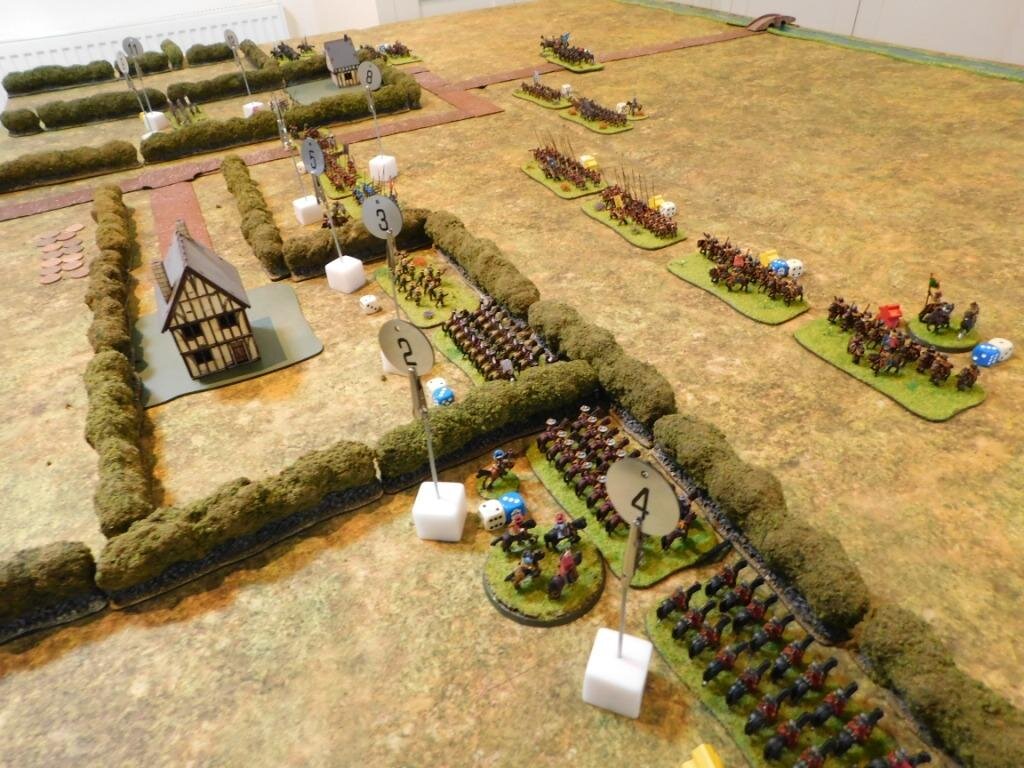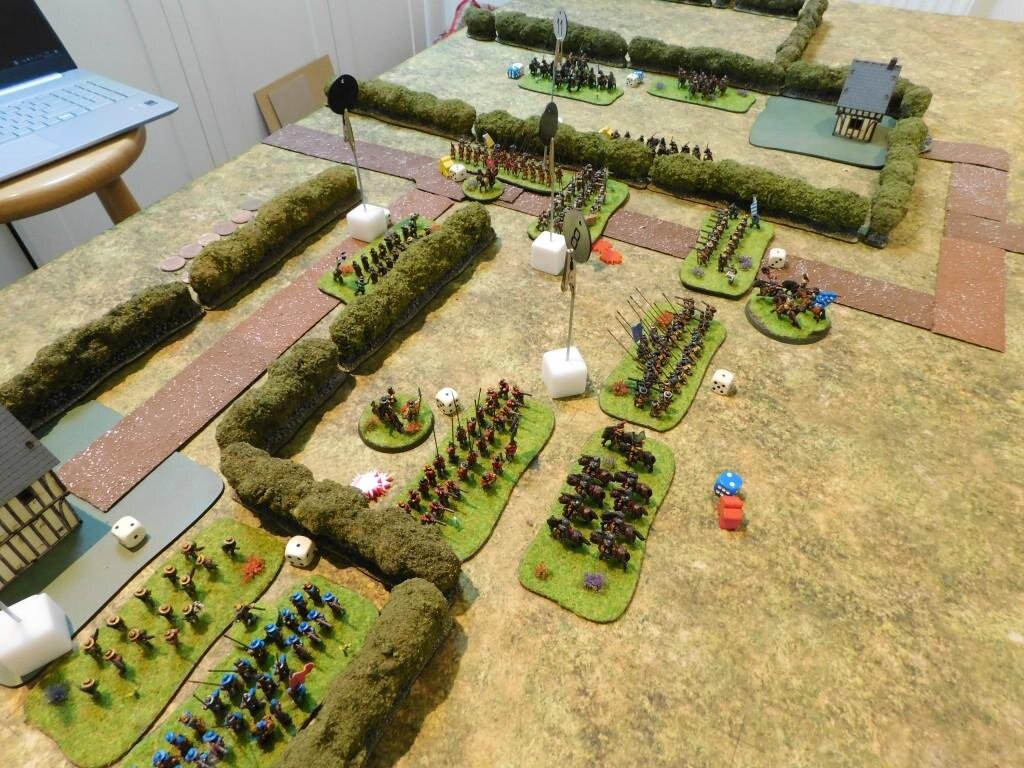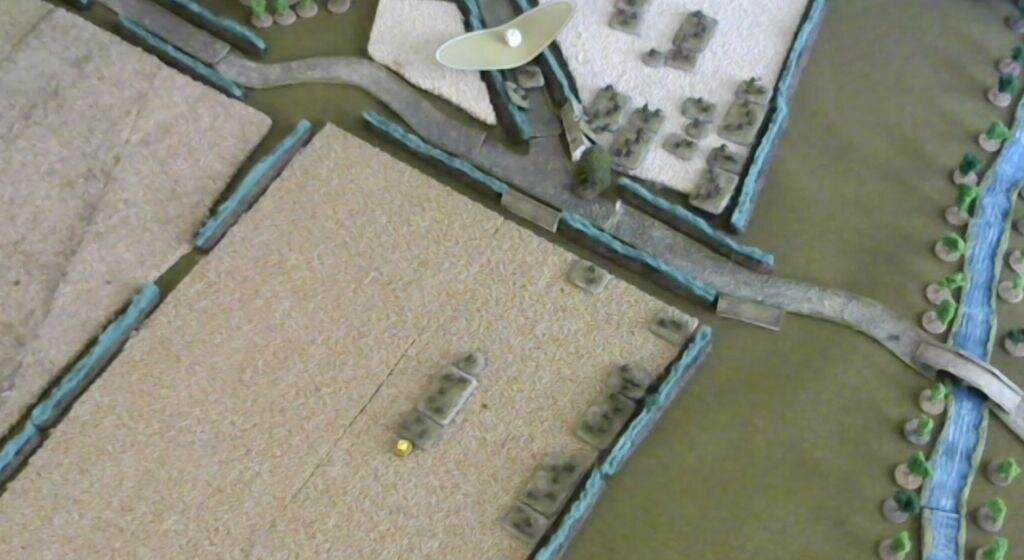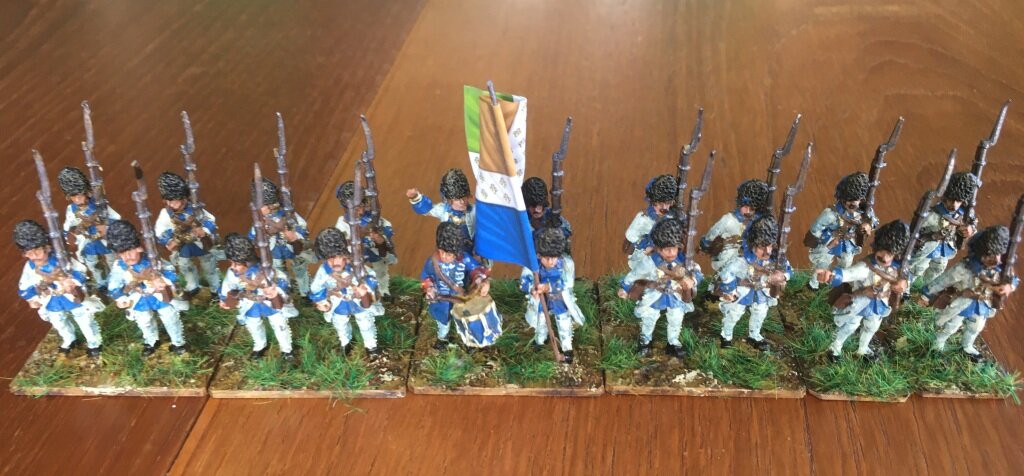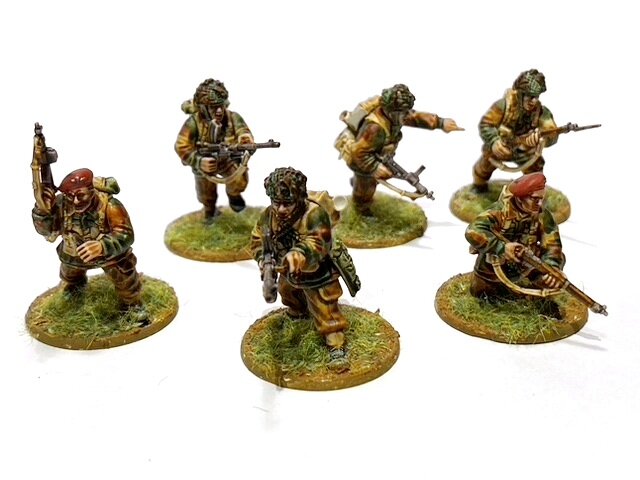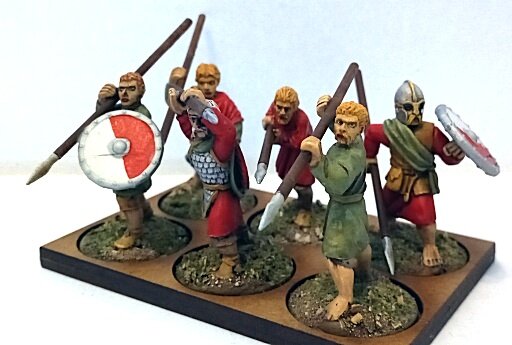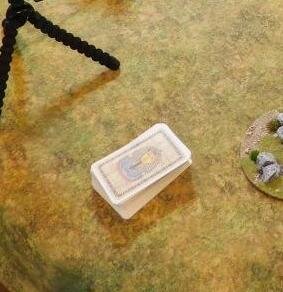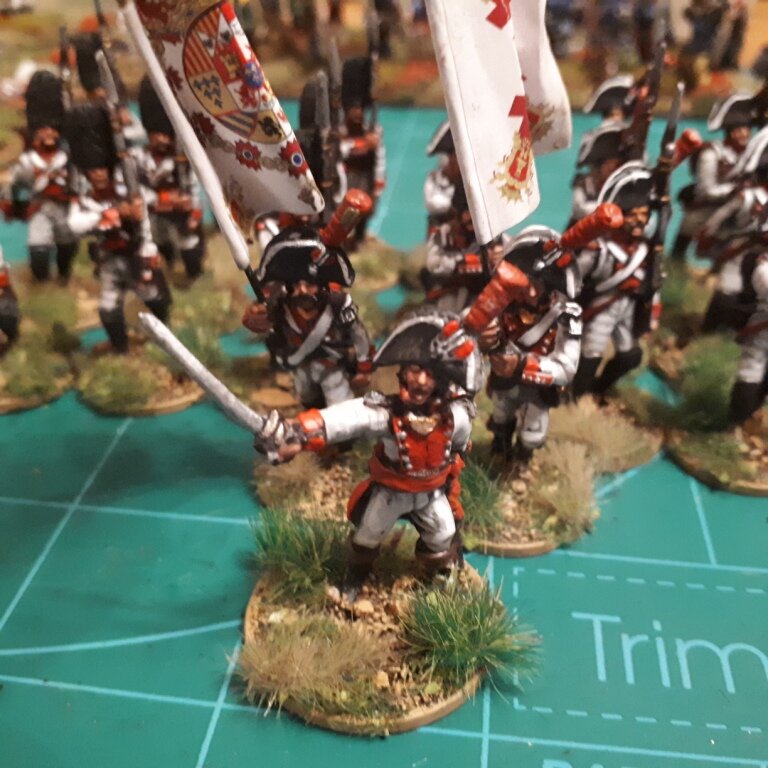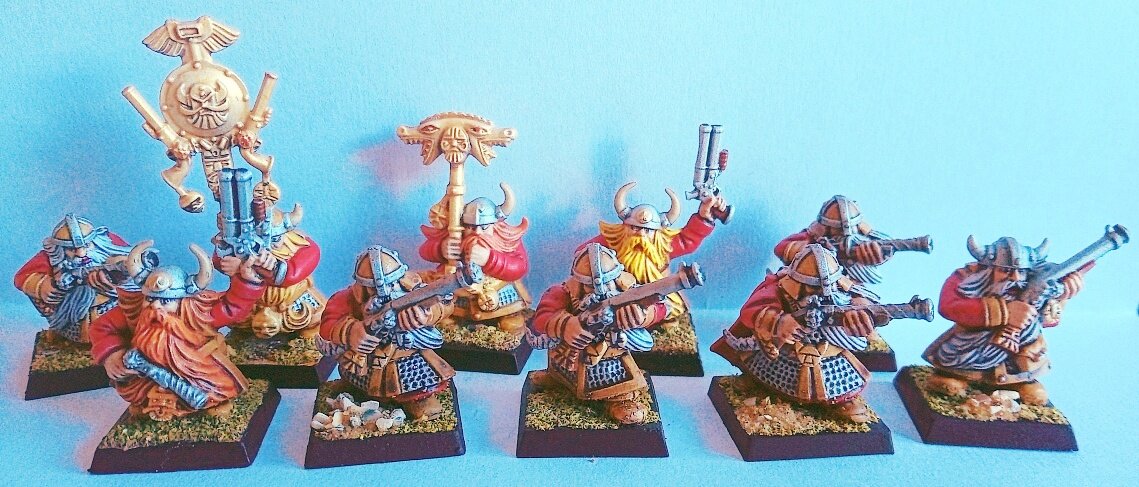Regular visitors will know that I’ve been looking for a new project to work on. My choice was the bottomless pit of Napoleonics: not a period I’ve ever collected figures for before.
After a bit of research, I decided to get some early-period French: the uniforms are less ornate than later on and one might as well start at the beginning! The next choice was what figures to use. The rest of my collection is all 15mm, so it had to be 15mm, but I had heard good things about AB’s range of 18mm models: 18mm/15mm: surely not that much difference, so I decided on them!
Next choice was size of units and basing.
I found the rather excellent Napoleonistyka website which gave me the sizes of the various units, so I decided to start by building a battalion of early war French infantry i.e. nine companies: one grenadier company of 80-90 men, seven fusilier companies of 120 men, and one company that was either another fusilier company (pre-1805) or a voltigeur/light company. About 1,000 men in all.
I then looked at basing. This was an absolute ‘mare, as I didn’t have a particular set of rules in mind. I investigated as much as I was able, and eventually settled on a 32-man battalion of 1 x grenadier base (4 figs), 1 x voltigeur base (4 figs), then two double company fusilier bases (each 8 figs, one with the 4 command figures in it) and two single company fusilier bases (each 4 figs).
That gave me a nice approximately square unit eight figures wide and four figures deep which seemed to be able to be used for most major rules systems. It could form an attack column eight wide, four deep; a march column four wide, eight deep; a square with each side being four figures facing, two figures turned away; or a line sixteen men wide and 2 deep.
That made each figure equal 30 men, and the only annoying thing was that the battalion was therefore technically eight companies strong, not nine…but my solution if the rules demand nine 4-figure companies is to have enough battalions to always be able to split one into spare companies if necessary!
I could have gone with six 6-figure bases, but couldn’t see how that would improve things in terms of portraying the companies correctly: logic would say that if you wanted to use 6-figure bases, you should drop the figure ratio to 20 men per figure and have nine 6-figure bases per battalion, which seems like an awful lot of figures!
The figures for my battalion arrived from Eureka UK quite quickly. Interestingly, you choose and buy the figures individually: time consuming but quite fun. They did look a bit big, but I decided to crack on and paint them anyway. GW Contrast paints for the most part, with colour choices via research into what other people had used.
So how did they turn out?






